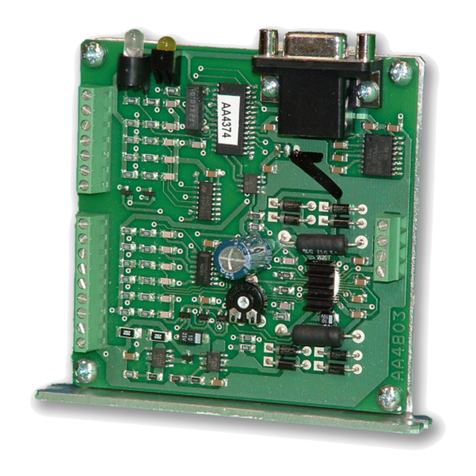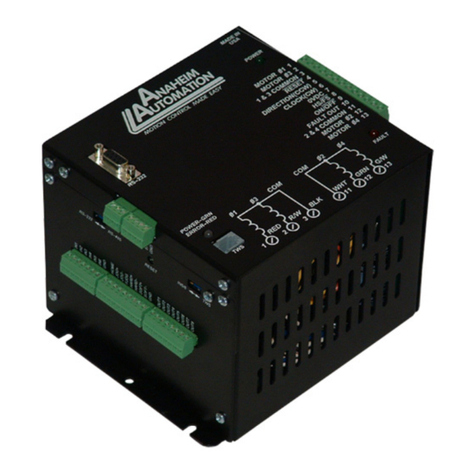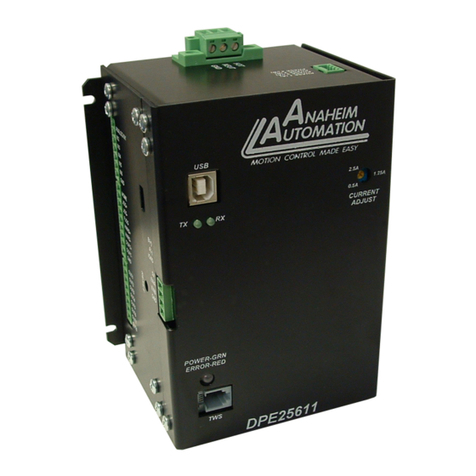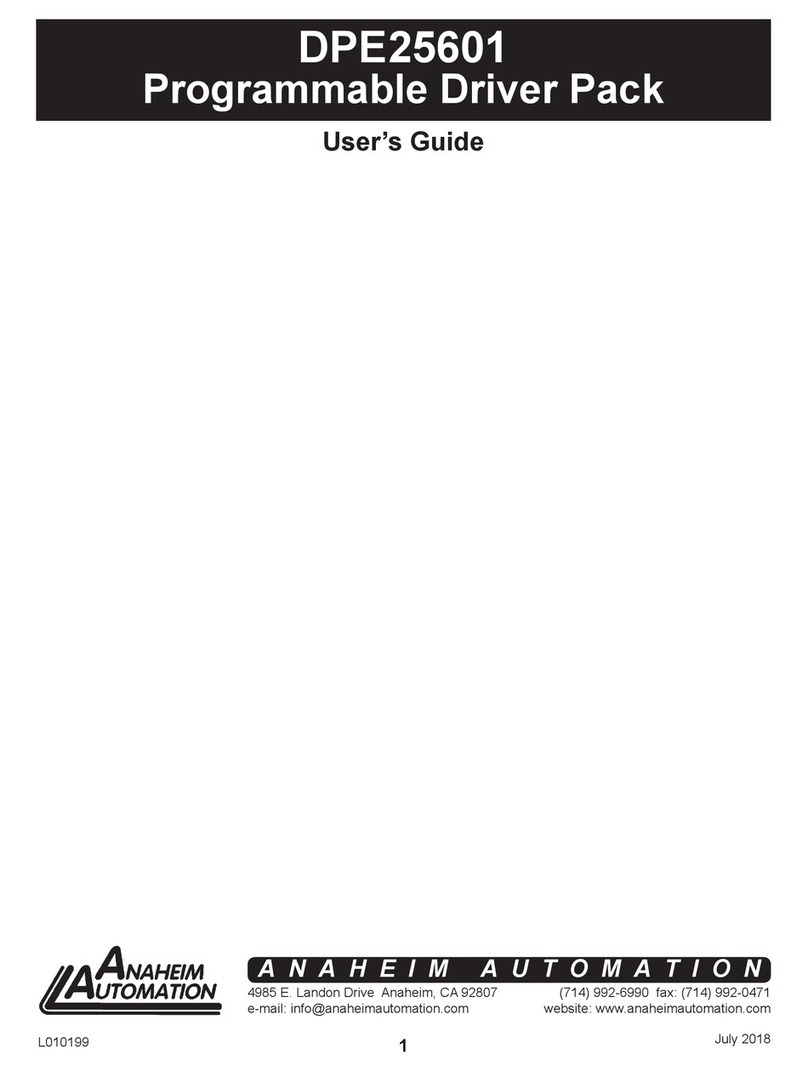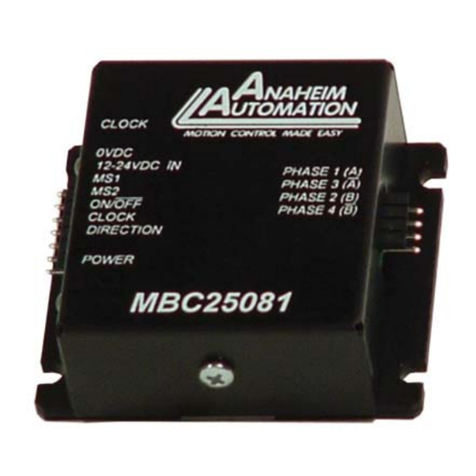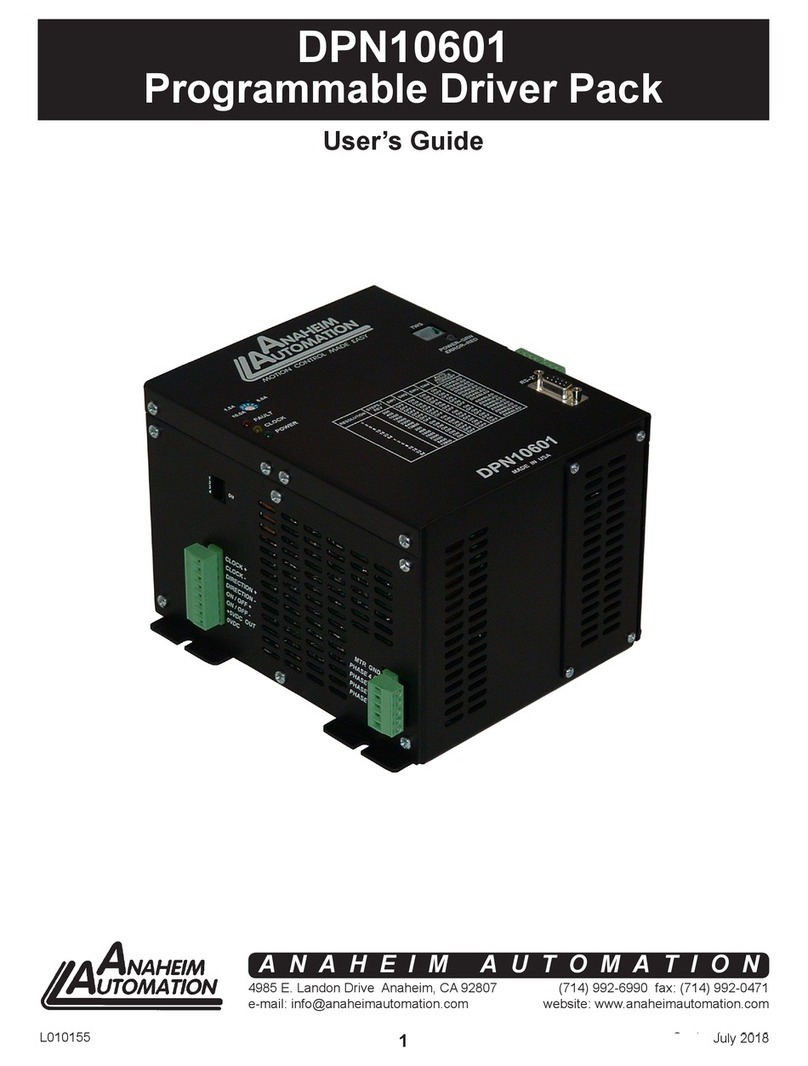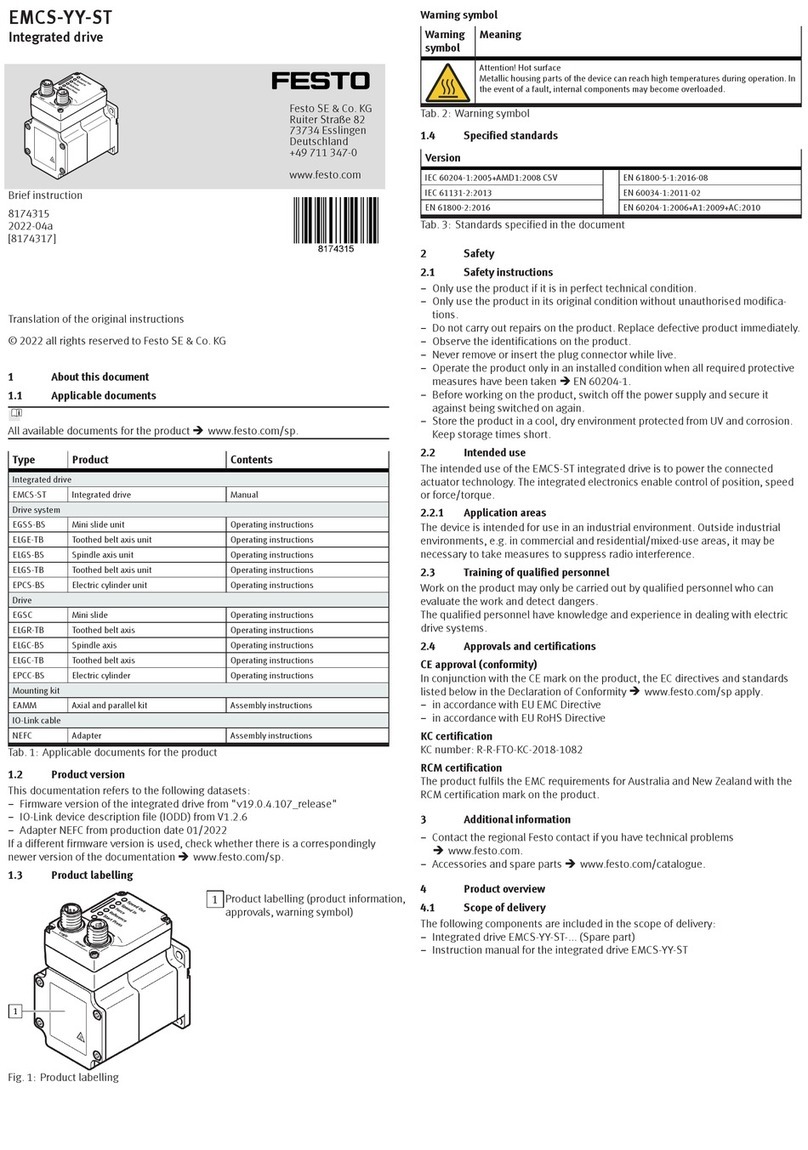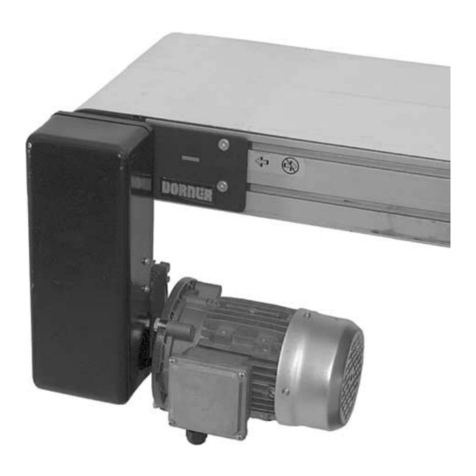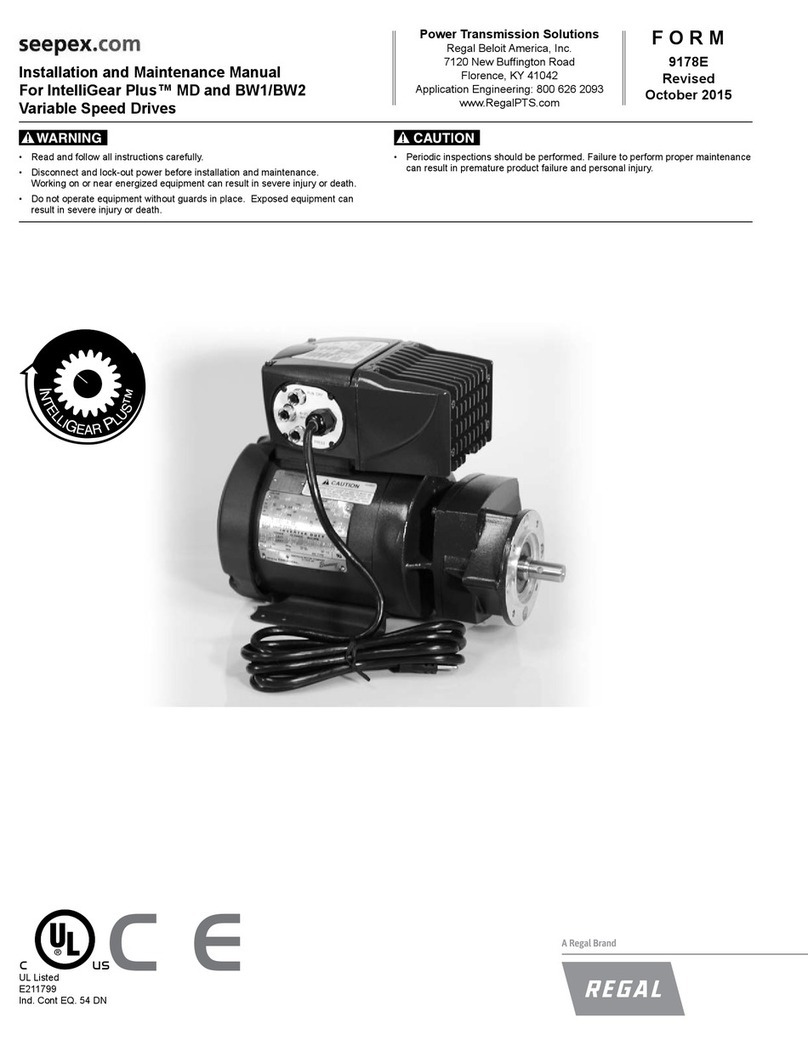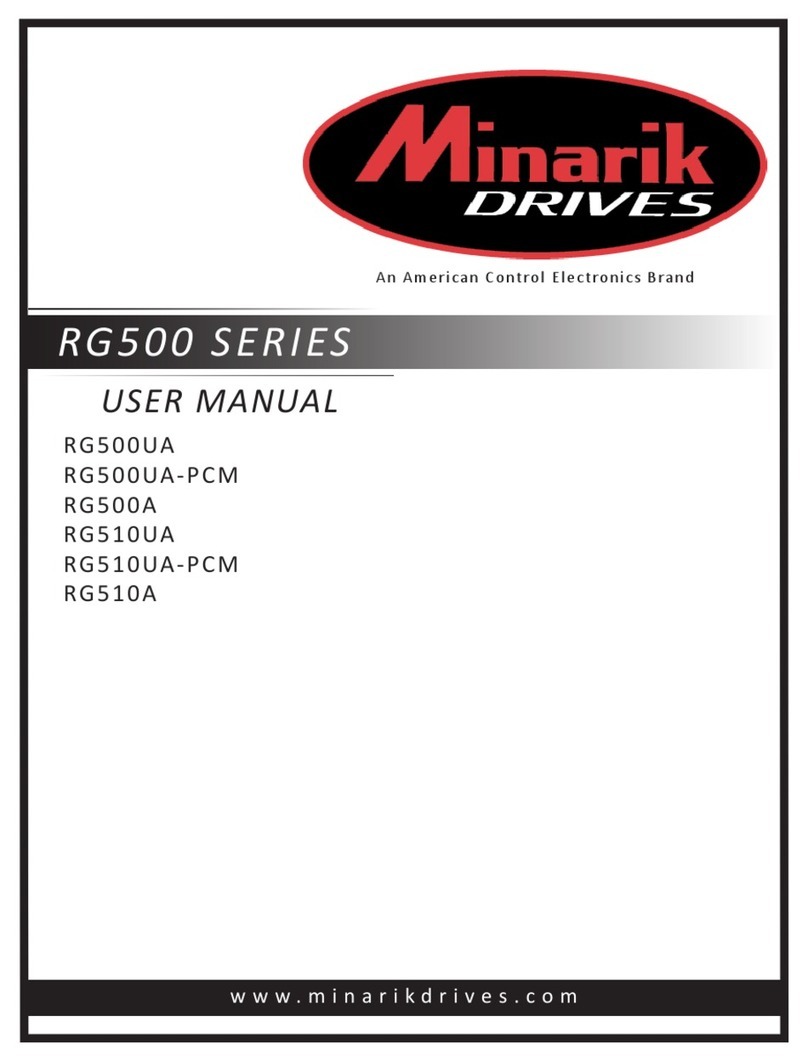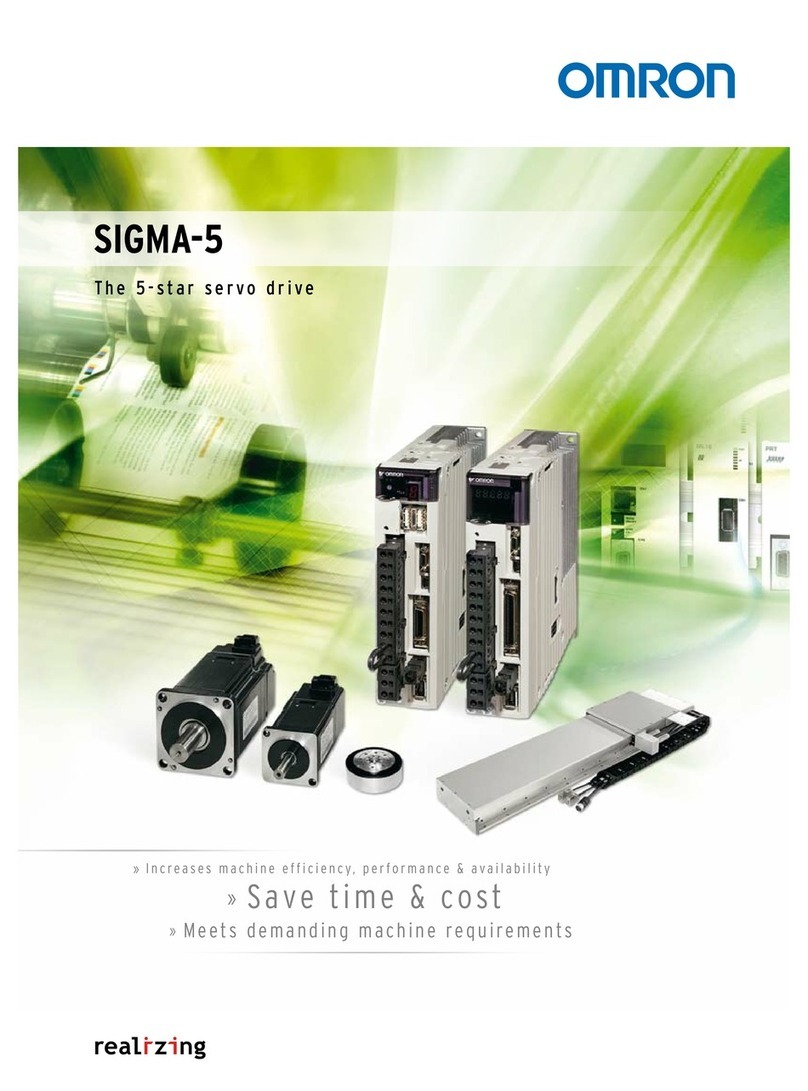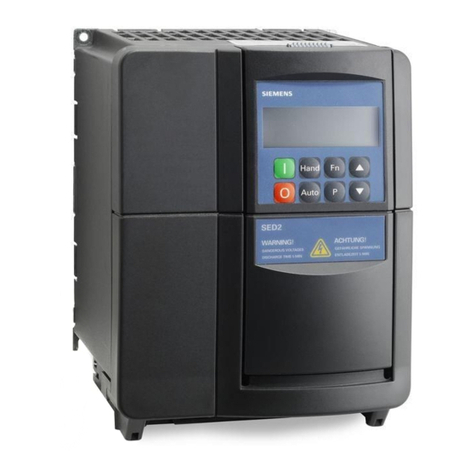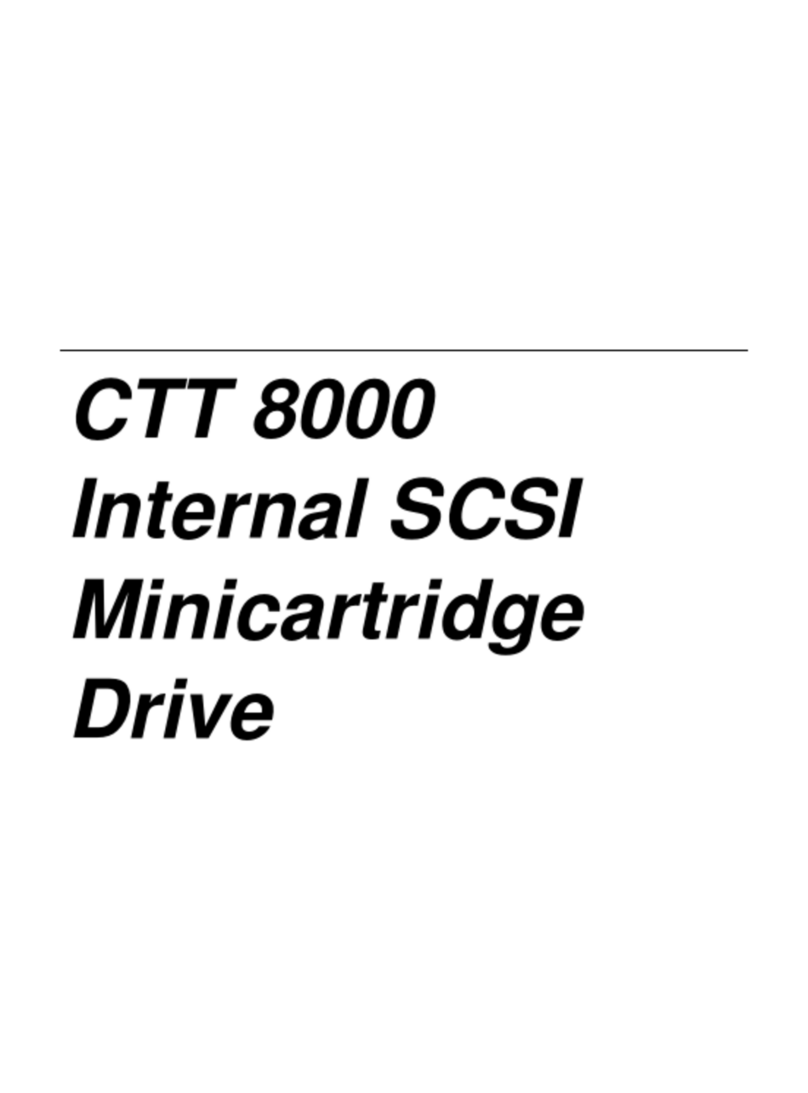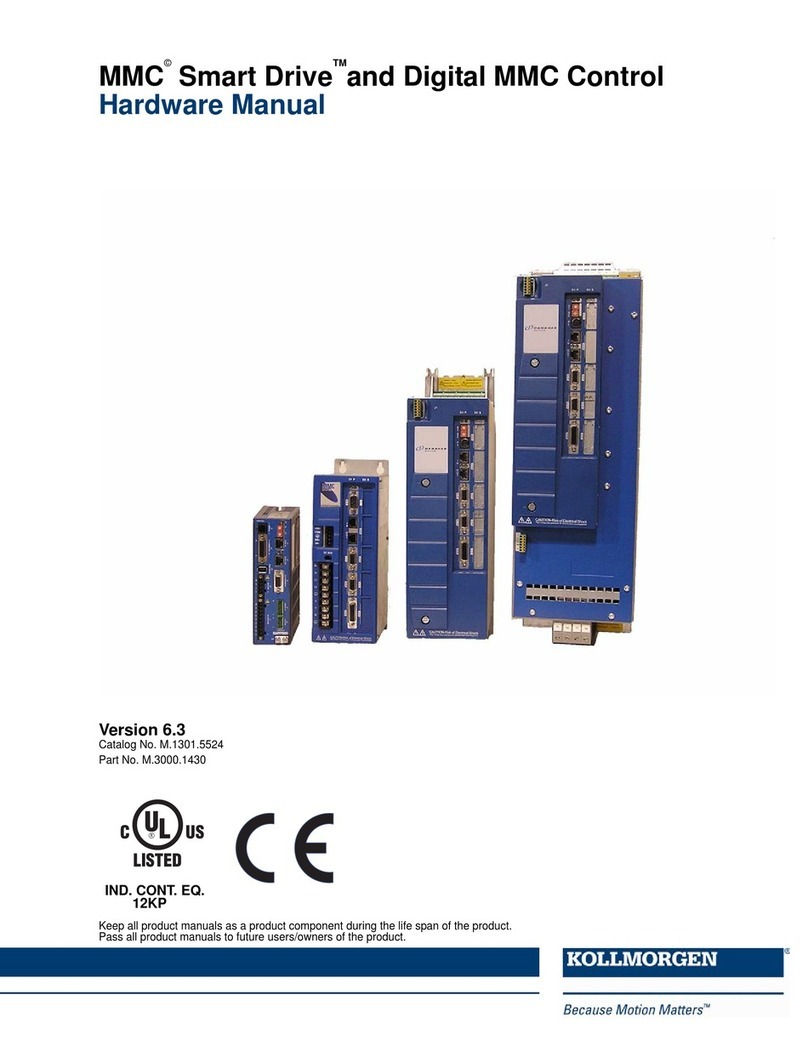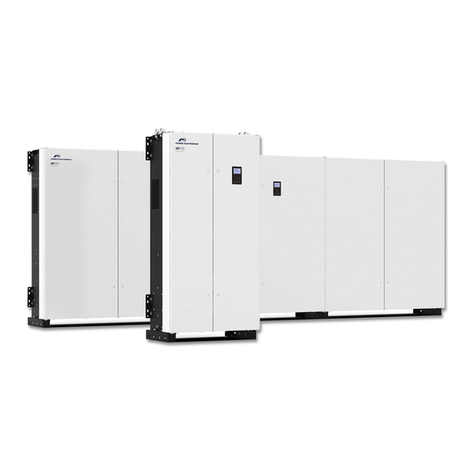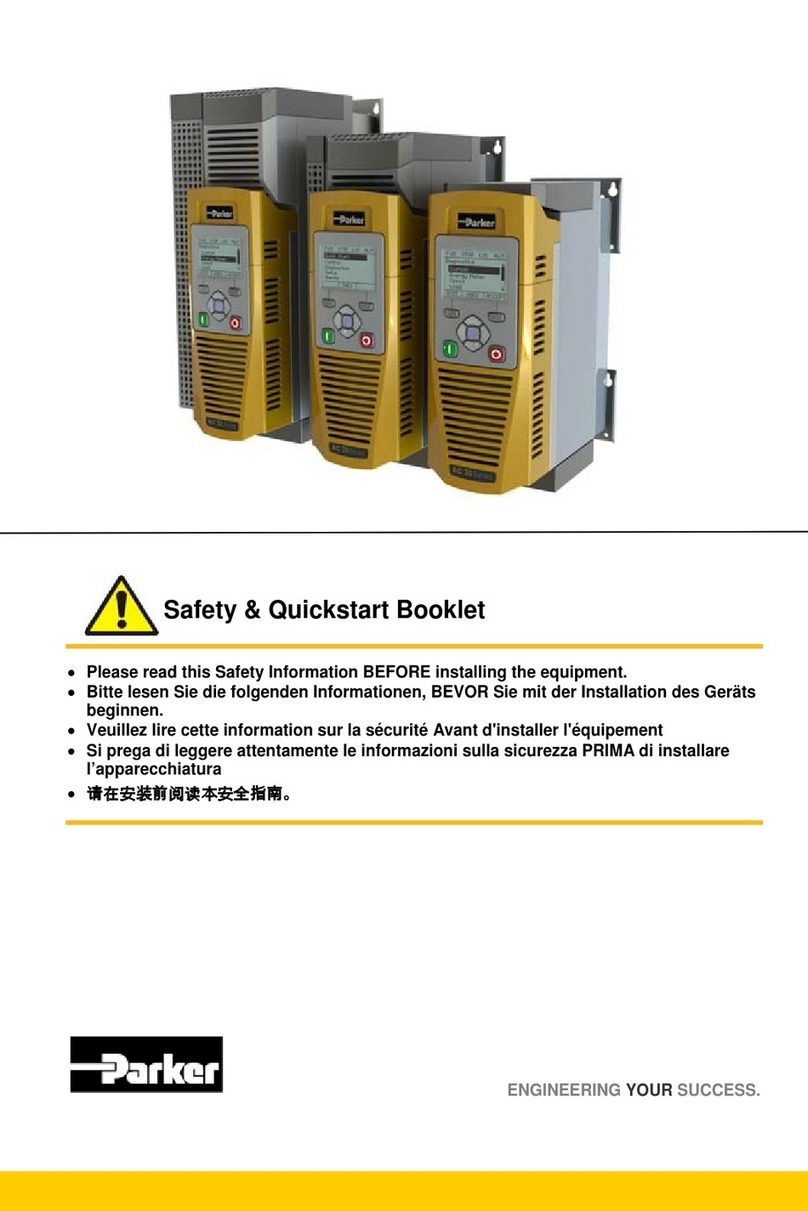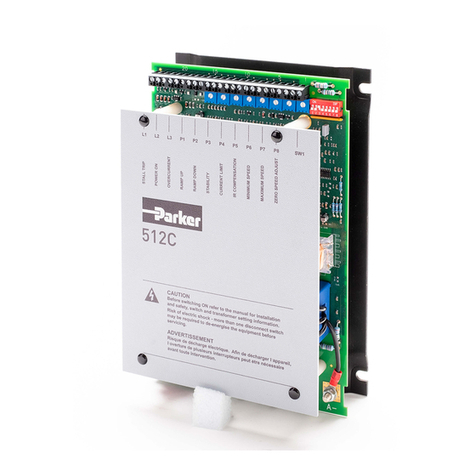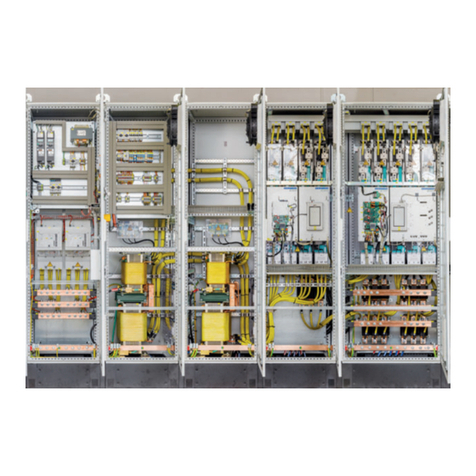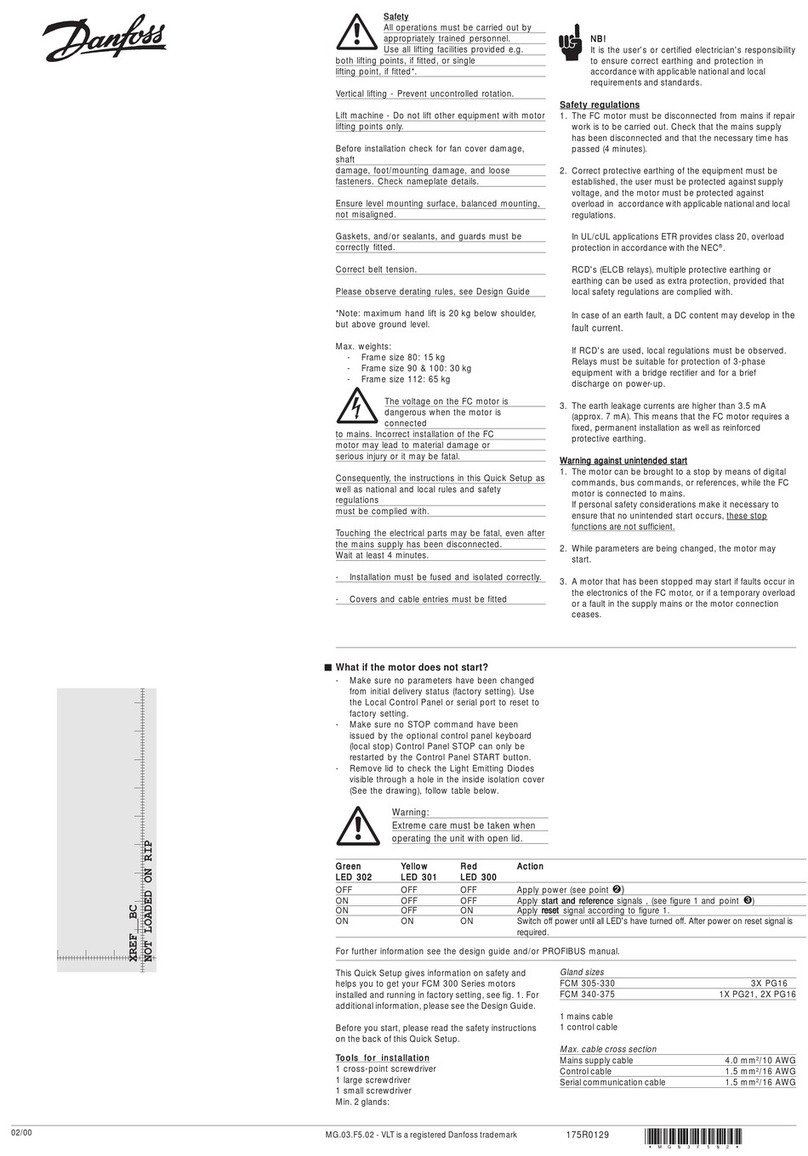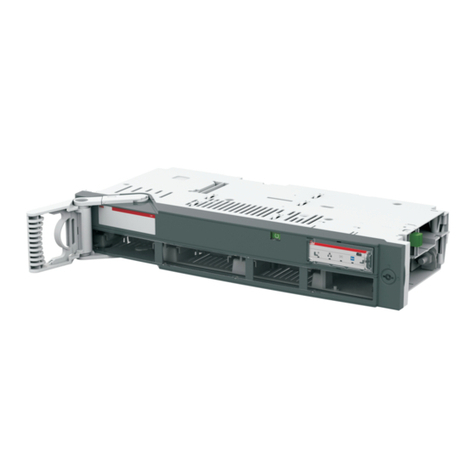
September 2012L010155 13
Jog Inputs: The jog switch inputs are internally pulled up by a resistor making them normally +5 volts.
To activate the input, the pin must be grounded to (0VDC). All jog switch inputs are internally clamped to
+5V, thus allowing voltages of up to +24VDC to be used. Jog is a manual function. The user can select
the direction and speed (fast or slow) by grounding the appropriate combinations of inputs. To jog a mo-
tor, it is necessary to ground the jog input for the direction desired. For fast jog, both the fast input and
jog input for the appropriate direction must be low at the same time. By grounding one of the jog inputs,
the user causes the motor to run at base speed. When the fast input is grounded, the motor will then ac-
celerate to the programmed jog speed. The position register will keep track of the number of steps that
are taken during jogging. Once a +jog or a -jog function has been performed, the direction register will
retain the last direction of movement; that is, a subsequent go command will be in the same direction as
the last jog command.
Inputs: All inputs (except input 1) are internally pulled up by a resistor making them normally +5V. To
activate the input, the pin must be grounded to (0VDC). All inputs are internally clamped to +5V, thus al-
lowing voltages of up to +24VDC to be used. Six inputs are provided per axis. The inputs are TTL, CMOS
and 24V compatible. The inputs may be used to initiate a machine cycle, for inter-axis coordination (in
stored program mode), for operator intervention, for sensing a machine condition such as out of stock or
wait temperature to be reached, etc. A ground input will read a “0” and an open or high input will read as
a “1”. Input 1 is a special input that is capable of reading an analog voltage between 0 and +5VDC. Since
this input does not have a pull-up resistor, biasing of this input is needed if it is not used as an analog
input. Inputs 5 and 6 are used together with the thumbwheel switch. To use inputs 5 and 6, SW2 of the
controller must be in the IN5/6 position. If SW2 of the controller is in the TWS position, then these two
inputs are not connected to the input port of the processor.
Analog Input: Input 1 can be congured to read an analog voltage to either set the absolute position of
the motor or to set the maximum speed of the motor.
The set the position, when told via the go to analog position command, the input will read a voltage
between 0 and +5VDC and based on the “upper and lower” limits of the function, a move will occur to a
calculated position between the two limits. The motor must nish the move before it can be told to read
the input again for the next position. For example, if the lower limit is set to 0 and the upper limit is set
to 5000 and the analog position is set at +2.0VDC, then the motor will move to position 2000. Changing
the lower limit to 1000 and the voltage to +3.2VDC, the motor will move to position 3560. See examples
below for calculations of the analog inputs. (Range of limits: 0 to 65535 and the lower limit < upper limit)
To set the max speed, when told via the set analog speed command the input will read a voltage between
0 and +5VDC, and based on the “upper and lower” limits of the function, a max speed can be obtained
based on a calculated frequency between the two points. The speed however can not be changed when
the DPY50601 is busy (moving). See examples below for calculations of the analog inputs. (Range of
limits: 0 to 50000 and the lower limit < upper limit)
Outputs: Eight outputs are provided per axis. Outputs may be used to operate relays, coolant valves, air
cylinders, or, with the correct interfacing, any electronically controlled device. The outputs can drive all
types of common peripheral power loads, including lamps, relays, solenoids, LED’s, printer heads, and
heaters. For inductive loads, it will be necessary to connect a clamping diode (refer to specication sec-
tion) from the output to the power source in order to provide adequate y-back protection. The outputs
are current sinking, open collector darlingtons. They are capable of sinking up to 100mA per output with
voltages up to 40VDC. Turning an output on will pull the output pin to ground and turning an output off
will make the output pin open. Output 1 has a special function (output on the y) that will enable it to be
triggered at a certain absolute position during a move. Output 8 has a special function that will trigger
when the encoder retries function fails.
Analog Calculations Example 1: Example 2:
(Upper-Lower) * (Voltage/5) = X (5000 - 0) * (2/5) = 2000 (5000 - 1000) * (3.2/5) = 2560
Lower + X = Position or Frequency 0 + 2000 = 2000 1000 + 2560 = 3560
July 2018




















